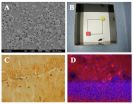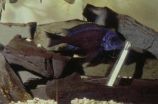Obesity link to increased risk for orthopedic conditions and surgical complications
2014-10-20
(Press-News.org) ROSEMONT, Ill.—Obesity affects individual patient care, the healthcare system and nearly every organ in the body. People with obesity often have other health problems, including diabetes, heart disease, certain tumors and cancers, and psychiatric disorders. However, the role of obesity in orthopaedic conditions and their treatment is less well-publicized.
According to orthopaedic surgeon William M. Mihalko, MD, PhD, of Campbell Clinic Orthopaedics in Memphis, Tenn., "obesity can accompany a multitude of comorbidities that can have a significant impact on a patient's outcome from elective orthopaedic surgery." He and his co-authors of "Obesity, Orthopaedics, and Outcomes," a study published in the November issue of the Journal of the American Academy of Orthopaedic Surgeons (JAAOS), suggest that even though patients with obesity face higher surgical complication rates, orthopaedic procedures can help minimize pain and improve bone and joint function.
The Pains of Excess Weight
Obesity is a strong independent risk factor for pain. Adolescents with obesity were more likely to report musculoskeletal pain, including chronic regional pain, than their normal-weight peers. The disease nearly doubles the risk of chronic pain among the elderly—causing pain in soft-tissue structures such as tendons and ligaments, and worsening conditions such as fibromyalgia in individuals already living with constant pain in their muscles and joints.
Obesity and Osteoarthritis
Osteoarthritis (OA)—a progressive "wear and tear" disease of the joints—is frequently associated with obesity. Every pound of body weight places four to six pounds of pressure on each knee joint. Research suggests that excess weight increases pressure, or the biomechanical load, on the knees and increases the likelihood of wearing away the cushioning surface of the knee joint, resulting in the development of OA and the need for total knee arthroplasty (TKA). The need for a TKA is estimated to be at least 8.5 times higher among patients with a body mass index (BMI) greater than or equal to 30, compared with patients who have a BMI within the normal range of 18.5 to 24.9.
Obesity and Injury
In addition to the increased likelihood of wear and tear on joints, excess weight also affects injury status. The odds of sustaining musculoskeletal injuries is 15 percent higher for persons who are overweight and 48 percent higher for people who are obese, compared to persons of normal weight.
Statistically, overweight and obese children also have significantly greater odds of lower extremity injuries and pain than do children of normal weight. Back and lower extremity pain, especially of the knee and foot, are more common among children with obesity.
Pre-Surgical Considerations
"Although no upper weight limits have been established that would contra-indicate elective orthopaedic surgery, every surgeon must understand the unique risks an obese patient faces and understand how to optimize and treat each of these patients on an individual basis," says Dr. Mihalko. The study authors recommend that patients with morbid obesity (BMI of 40 or higher) be:
advised to lose weight before total joint arthroplasty (TJA);
offered resources for weight loss before surgery; and,
counseled about the possible complications and inferior results that may occur if they do not lose weight.
While patients with obesity may experience slower recovery and higher risks of surgical complications that can compromise outcomes, outweighing the functional benefits of TJA in some cases, orthopaedic interventions still can provide improvements in quality of life for even super-obese patients.
INFORMATION:
November 2014 Full JAAOS Table of Contents
Agricultural Injuries to the Hand and Upper Extremity
Approach to Pain Management in Chronic Opioid Users Undergoing Orthopaedic Surgery
Flatfoot Deformity in Children and Adolescents: Surgical Indications and Management
Radial Head Arthroplasty: State of the Art
Diagnosis and Management of Langerhans Cell Histiocytosis
Vertebroplasty and Kyphoplasty for the Treatment of Osteoporotic Vertebral Compression Fractures
ICL 64: Controversies in the Intramedullary Nailing of Proximal and Distal Tibia Fractures
On the Horizon From the ORS: Biomaterials for Cartilage Regeneration
On the Horizon From the ORS: Optimizing BMP-2-induced Bone Repair With FGF-2
For more AAOS news, visit the News Bureau
Follow AAOS on Twitter
Follow AAOS on Facebook
Google+
Orthopaedic surgeons restore mobility and reduce pain; they help people get back to work and to independent, productive lives. Visit ANationInMotion.org to read successful orthopaedic stories.
ELSE PRESS RELEASES FROM THIS DATE:
2014-10-20
Older individuals who are subliminally exposed to positive stereotypes about aging showed improved physical functioning that can last for several weeks, a new study led by the Yale School of Public Health has found.
Researchers used a novel intervention method to examine for the first time whether exposure to positive age stereotypes could weaken negative age stereotypes and their effects over time, and lead to healthier outcomes.
The study, to be published online in an upcoming issue of the journal Psychological Science, consisted of 100 older individuals (average ...
2014-10-20
Antibiotics—one of modernity's great success stories—are charms that come with a curse. Their overuse in human and animal populations can lead to the development of resistant microbial strains, posing a dire threat to global health.
In a new study, Hansa Done, PhD candidate, and Rolf Halden, PhD, researchers at Arizona State University's Biodesign Institute, examine antibiotic use in the rapidly expanding world of global aquaculture.
Done and Halden measured the presence of antibiotics in shrimp, salmon, catfish, trout, tilapia and swai, originating from ...
2014-10-20
This news release is available in German. Physical exercise in old age can improve brain perfusion as well as certain memory skills. This is the finding of Magdeburg neuroscientists who studied men and women aged between 60 and 77. In younger individuals regular training on a treadmill tended to improve cerebral blood flow and visual memory. However, trial participants who were older than 70 years of age tended to show no benefit of exercise. Thus, the study also indicates that the benefits of exercise may be limited by advancing age. Researchers of the German Center ...
2014-10-20
ATLANTA (October 20, 2014) – New data presented today indicate that consumers of frozen meals (1) had higher daily intakes of dietary fiber, potassium, calcium and protein, and lower daily intakes of calories and saturated fat than consumers of quick service restaurant (QSR) meals (2). The poster, Consumption of Frozen Meals as Compared to Quick Service Restaurant Meals is Associated with Better Nutrient Intakes in Adult Participants of The National Health and Nutrition Examination Survey (2003-2010), was presented at the 2014 Academy of Nutrition and Dietetics Food ...
2014-10-20
Boulder, CO, USA — Ryan McKellar's research sounds like it was plucked from Jurassic Park: he studies pieces of amber found buried with dinosaur skeletons. But rather than re-creating dinosaurs, McKellar uses the tiny pieces of fossilized tree resin to study the world in which the now-extinct behemoths lived.
New techniques for investigating very tiny pieces of fragile amber buried in dinosaur bonebeds could close the gaps in knowledge about the ecology of the dinosaurs, said McKellar, who is a research scientist at the Royal Saskatchewan Museum in Saskatchewan, ...
2014-10-20
New Rochelle, NY, October 20, 2014—When it comes to picking an egg donor, until recent years, recipients tended to prefer someone with a similar appearance. Donor trait choices are changing, though, and which traits are now more preferable and why is the focus of "Beauty, Brains or Health: Trends in Ovum Recipient Preferences," an article published in Journal of Women's Health, a peer-reviewed publication from Mary Ann Liebert, Inc., publishers. The article is available free on the Journal of Women's Health website at http://online.liebertpub.com/doi/full/10.1089/jwh.2014.4792 ...
2014-10-20
Boulder, CO, USA — Venus is hiding something beneath its brilliant shroud of clouds: a first order mystery about the planet that researchers may be a little closer to solving because of a new re-analysis of twenty-year-old spacecraft data.
Venus's surface can't be seen from orbit in visible light because of the planet's hot, dense, cloudy atmosphere. Instead, radar has been used by spacecraft to penetrate the clouds and map out the surface – both by reflecting radar off the surface to measure elevation and by looking at the radio emissions of the hot surface. ...
2014-10-20
This news release is available in Spanish.
Enara Herran, a researcher at the UPV/EHU's Department of Pharmacy and Pharmaceutical Technology, is working to improve the way Alzheimer's and Parkinson's treatments are administered. And it is a fact that, as Herran herself stressed, "both diseases are becoming more and more common in our society".
Both disorders affect the neurones: their structure and function is lost, and this in turn leads to the deterioration in the patient's motor, cognitive, sensory and emotional functions. As Herran pointed out, in many cases ...
2014-10-20
VIDEO:
The Internet "sleeps " -- but not everywhere. Find out why.
Click here for more information.
Researchers studying how big the Internet is have found that it "sleeps," almost like a living creature.
The finding will help scientists and policymakers develop better systems to measure and track Internet outages, such as those that struck the New York area after Hurricane Sandy. Understanding how the Internet sleeps will help them avoid confusing a sleeping Internet with ...
2014-10-20
Fish just want to have fun, according to a University of Tennessee, Knoxville, study that finds even fish "play."
The research is published in the academic journal Ethology and can be viewed at http://bit.ly/1tLunpC.
Gordon Burghardt, a professor in the departments of Psychology and Ecology are Evolutionary Biology, is known for defining "play" in a way that allows us to identify it in species not previously thought capable of play, such as wasps, reptiles and invertebrates.
"Play is repeated behavior that is incompletely functional in the context or at the age ...
LAST 30 PRESS RELEASES:
[Press-News.org] Obesity link to increased risk for orthopedic conditions and surgical complications





